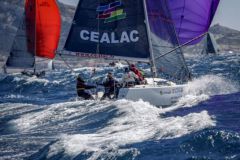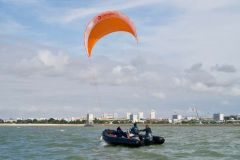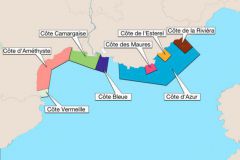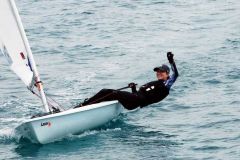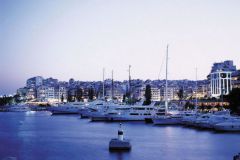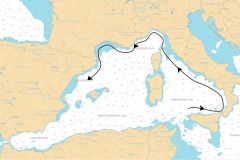To compensate for the old boats which are expensive to maintain but which also pollute our seas, many SMEs have their Research & Development department work to develop the boats. Safer, less expensive in terms of energy, cleaner, easier to maintain - that is how ships, whether fishing boats, pleasure boats, freighters or people carriers, should evolve. The competitiveness clusters Mediterranean Sea and Atlantic Brittany support several companies such as A2V, Beyond the Sea, CMR, Fortil, Optis, Sofresud and STR-Europe which work notably on the propulsion mode of ships. This is all the more strategic since one of the new regulations of the International Maritime Organization (IMO) consists in reducing sulphur emissions at sea in certain SECA (Sulfur Emission Control Area).
Finding a new fuel source that is more environmentally friendly
Since 1 January 2015, vessels sailing on the English Channel, the North Sea and the Baltic will have to use fuel with a sulphur content equal to 0.1% compared with 1% currently. In 2020, this obligation will affect all seas and oceans with a sulphur content equal to 0.5%. So perhaps it is the end of fuel oil that has been announced.
Other fuels are currently under study, such as liquefied natural gas (LNG), which reduces nitrogen oxide and CO2 emissions and fine particles. Brittany Ferries has already ordered a gas ferry with LNG tanks in its holds from shipbuilder STX Europe. It will be delivered in 2016, will measure 210 meters long and will carry 2,474 passengers 600 vehicles and 40 trucks worth 270 million uros. This project has received some 30 million euros in aid as part of future investments.
Even if gas remains a good idea to reduce polluting energy emissions, its implementation remains difficult "Their supply requires finding port authorities and gas suppliers who agree to develop shore-based infrastructure to supply ships." explains Christophe Avellan, Deputy Director of the Mediterranean Sea cluster.
Towing ships with kitesurfers
The Ship of the Future programme supports 34 collaborative projects worth 129 million euros. Among all these ideas, Beyond the Sea proposes to tow boats using kites. This program, piloted by the navigator Yves Parlier is co-labelled by the Mediterranean and Brittany Sea poles and includes the companies CMA-CGM and Porcher Industries as well as the engineering school ENSTA Bretagne "Our idea is to tow the boats with a kite. This saves 20% of energy on the bill as soon as the wind reaches 18 km/h. In this configuration, a container ship could save 30,000 litres of fuel per day! The system will consist of an inflatable kite equipped with position and motion sensors. It will also be piloted by computer thanks to a set of winches and pulleys, explains the engineer-navigator. Other systems exist, notably Skysails. But the latter is complicated to implement."
A test campaign will take place on a 13 meter long fishing boat thanks to a 50m2 sail made in Arcachon. The flight will be controlled automatically. To finance his research Yves Parlier planned to develop his project for smaller boats (5 to 10 meters). "Gradually, we will offer systems for larger boats with increasingly automated kites."
Propose an architectural or electric alternative for fast boats
A2V (Advanced Aerodynamic Vessels), a young company created in June 2013 in Carquefou (Loire-Atlantique), wants to offer fast but energy-efficient vessels. Similar to a catamaran, its wing-shaped nacelle would allow it to sail on the waters but also in the air "Compared to a traditionally designed boat of comparable size, our boat will go twice as fast while consuming less fuel for the entire trip." explains Matthieu Kerhuel, Managing Director of the company.
A2V wants to specialize in the creation of fast boats to transport passengers or personnel to oil platforms "At the end of 2014, we plan to build an initial prototype of around ten metres before moving on to a 25 metre unit at a speed of 60 knots," announced the company's general manager, who has just completed a ?550,000 fund-raising campaign with private individuals. These funds will help strengthen the team, which will number around ten people at the end of 2014, including engineers and doctors from the École Centrale de Nantes
STR Europe (Sustainable Technology and Research), a naval engineering group specialising in electric and hybrid propulsion, has set up the Déesse project. It is a shuttle that will run like a hybrid car, diesel and electricity through lithium batteries. In association with Eca Electronaval, Moteurs Baudouin and SupMéca, the group has created a first all-electric shuttle to Guadeloupe. It has a capacity of 50 people and works with rechargeable Lightionics batteries which offer a 15 hours autonomy. For lack to find a French partner this shuttle was realized by a Turkish shipyard.
Offering"all-electric" solutions
Fortil, an engineering company, started designing and selling a new all-electric motor for small boats and tenders. This project, named SL-One, which required two years of studies and a budget of 500,000 euros, sold 900 copies in France during its first year of commissioning. Its big advantage lies in the fact that its engine battery is recharged in two hours thanks to a solar panel "The power supply is automatic and is even optimized thanks to the electronic board, which controls the absorption of radiation on the panel, explains Frédéric Brinon, in charge of marketing the product, which is a technological and commercial breakthrough, since the engine is sold for less than 1,400 euros (against more than 2,000 euros for competing models). As a result, in a potential market of 7,000 units, Fortil plans to sell 3,000 in France and abroad."
Despite the potential of electric motors, they cannot be installed on long-distance boats. Fuel oil and diesel thus remain for the moment the main energy used.
This is where the Airclair project makes sense. Set up by CMR (Contrôle Mesure Régulation), a group specialising in marine instrumentation, it consists in creating new sensors capable of continuously analysing the quality of the fuel entering the engine. This project, which is currently in the terminal phase, will therefore make it possible to optimise the adjustment of the electronic injection engine. This will save 5% on fuel consumption. These sensors, which required a budget of 3.3 million euros, are financed to the tune of 1.5 million by the FUI (Fonds Unifié Interministériel) and the PACA region's local authorities. To set up and manufacture this project, CMR has joined forces with the Ecole Centrale de Marseille, the University of Aix, CMN (Compagnie Méridionale de Navigation) and SP3H, which holds the know-how "The sensors will be produced in Marseille and will equip the engines of boats but also those of the power stations, which are confronted with the same problems of profitability" explains Patrice Flot, Deputy Managing Director of CMR.





